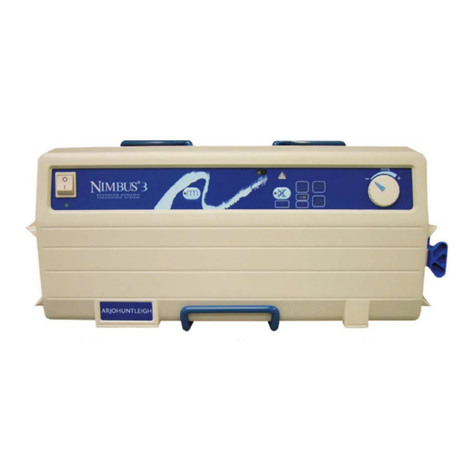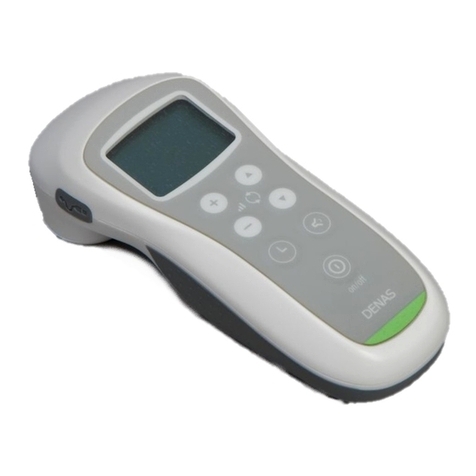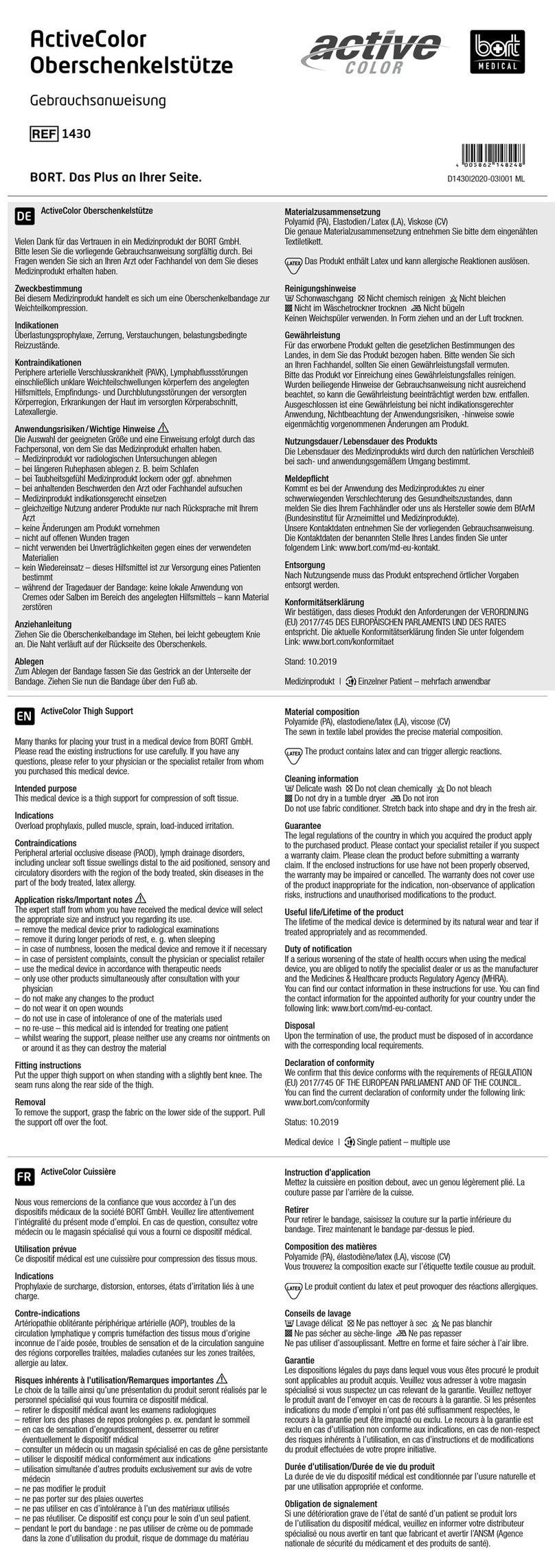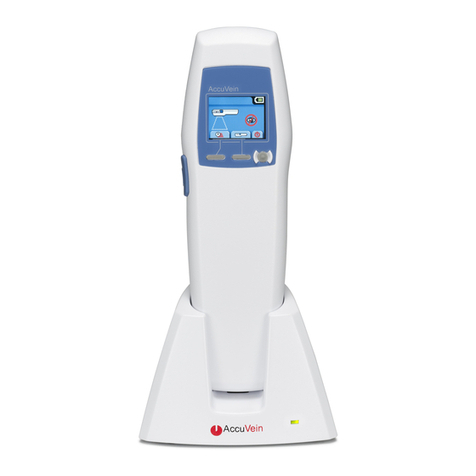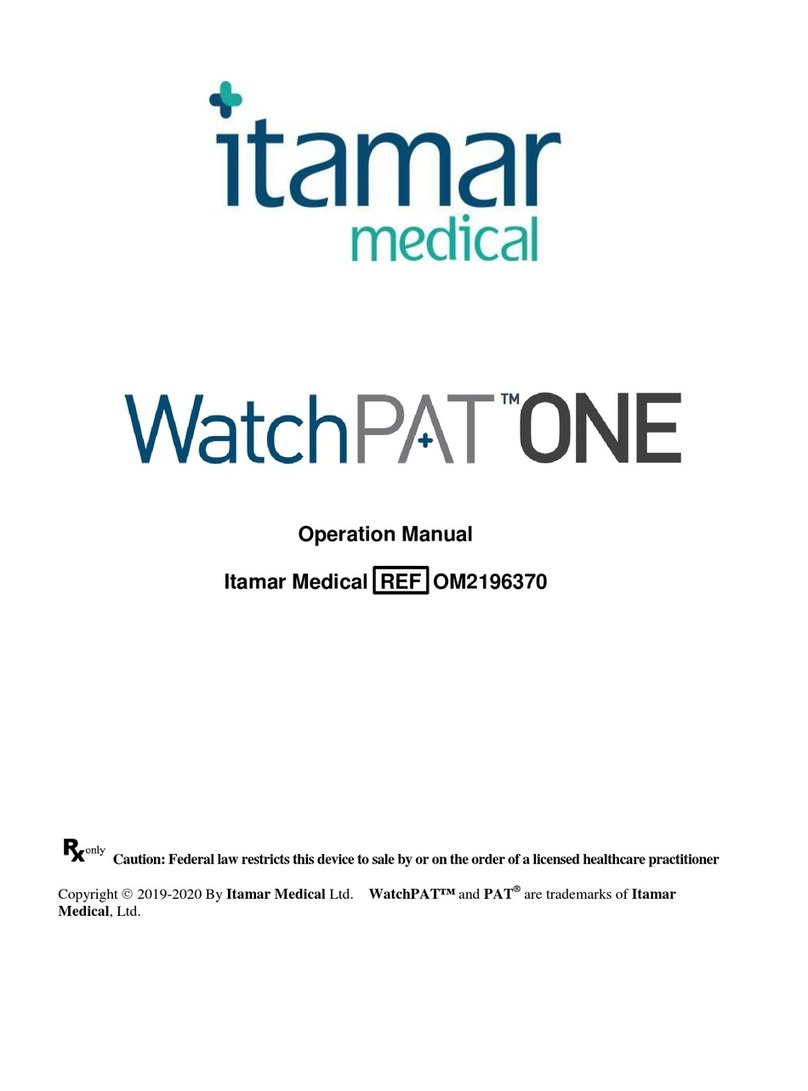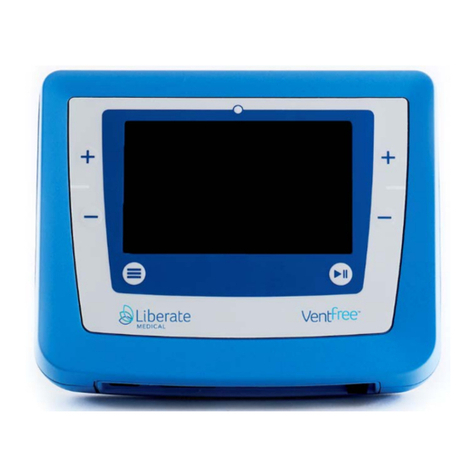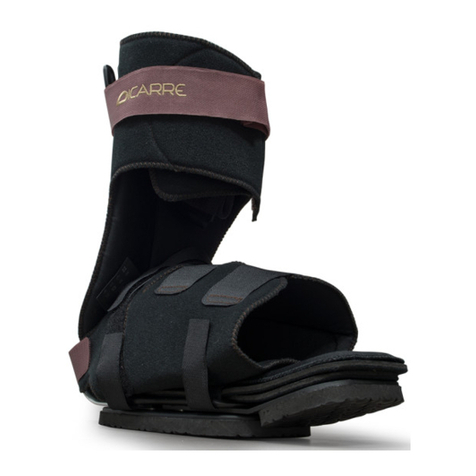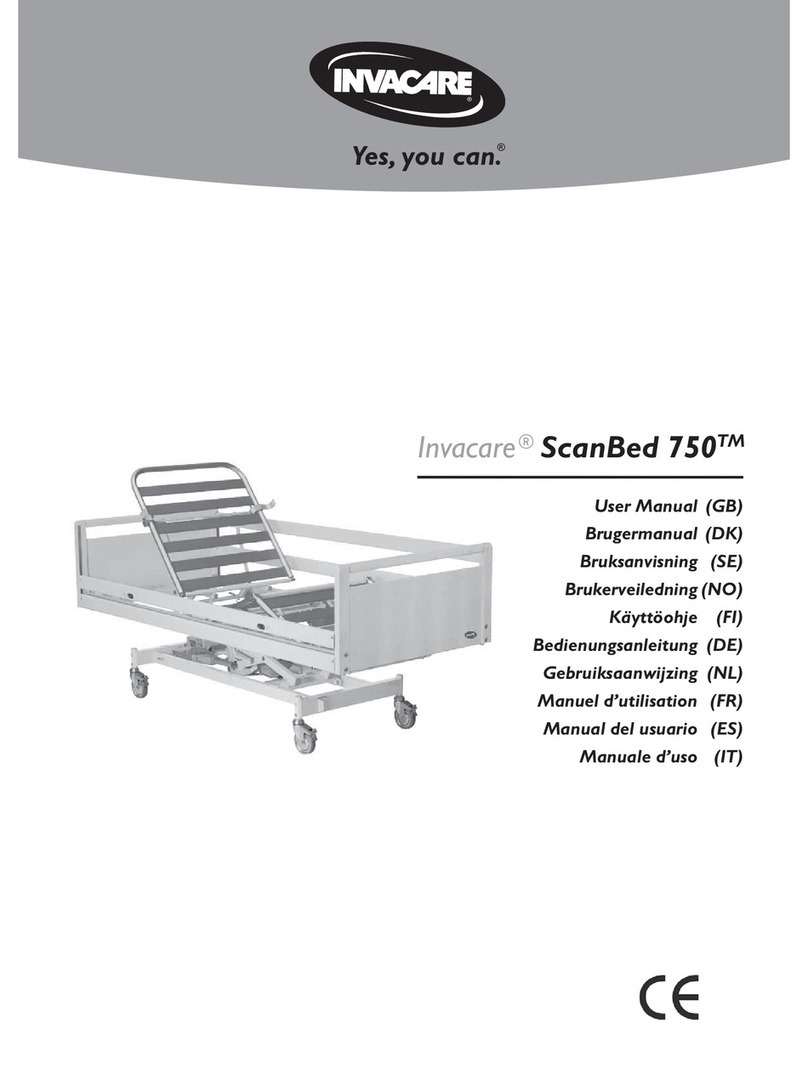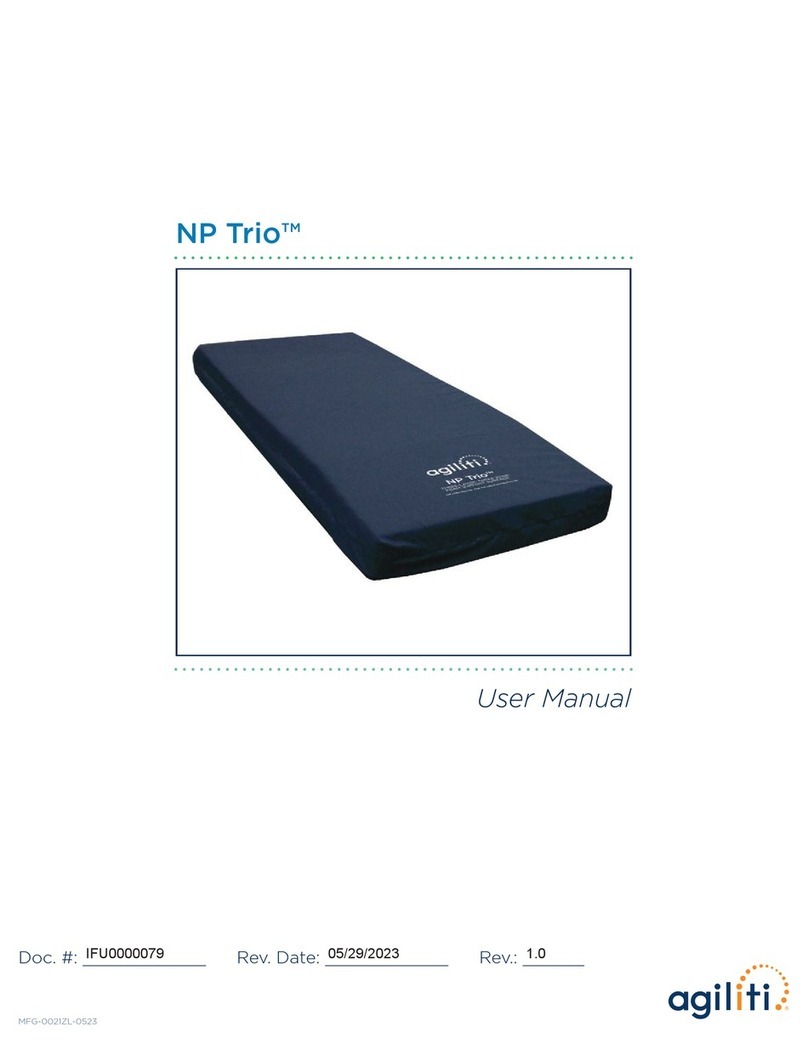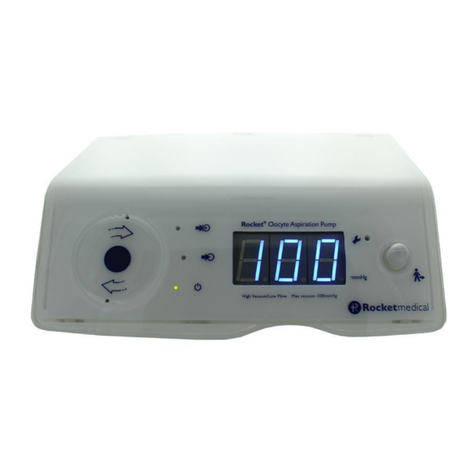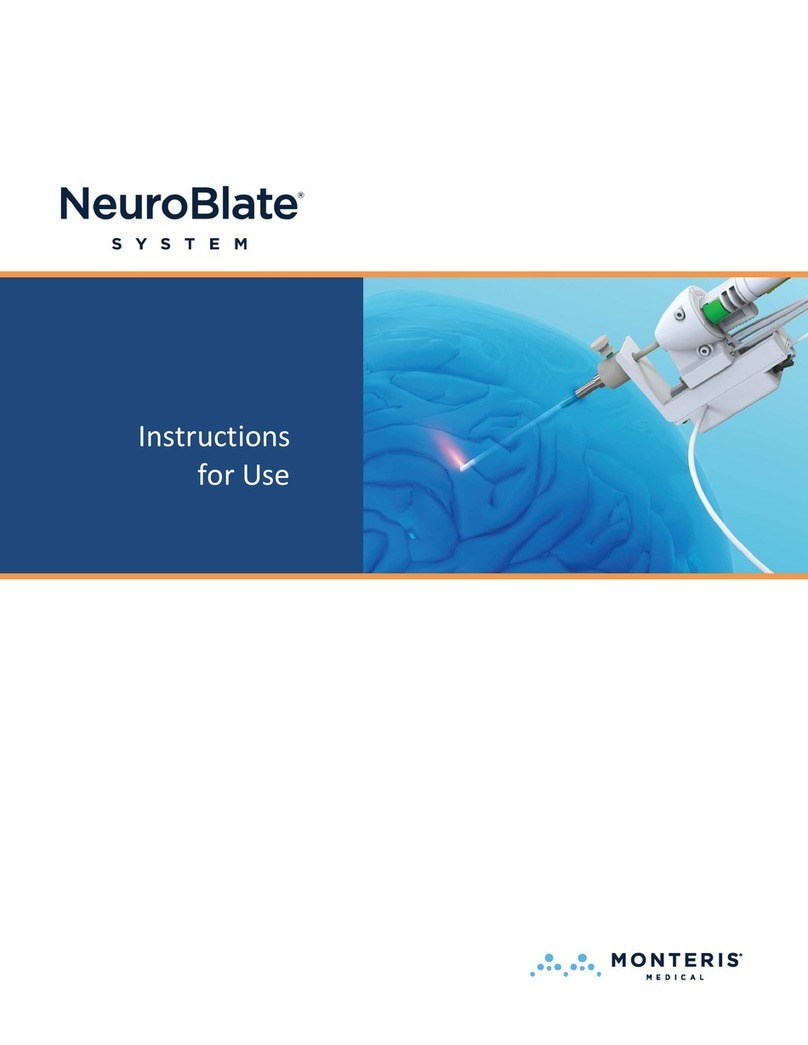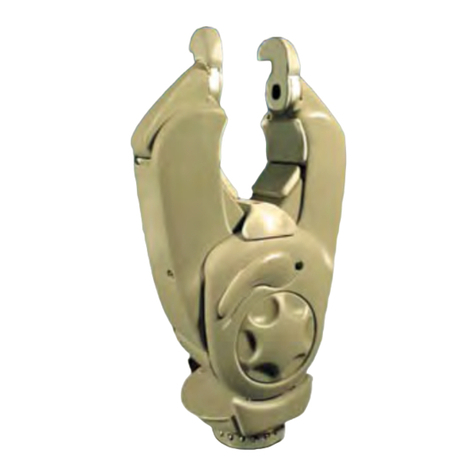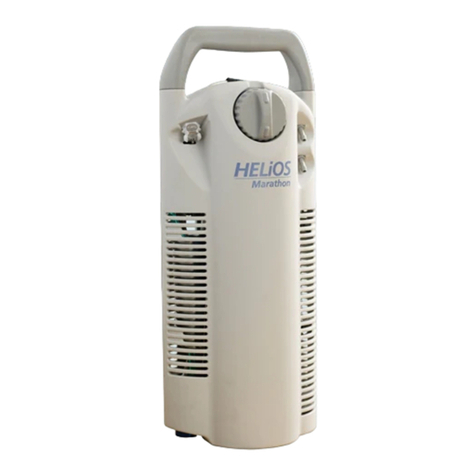2. Description of the KINEX-Ankle
Note: See also page 2!
1. Clamping levers to adjust the height
of the calf support assembly
2. Calf support assembly
3. Motor A (center of rotation for dor-
sal extension/plantar flexion)
4. Bracket for programming unit
5. Clamping lever to adjust the inclina-
tion of the carriage
6. Aiming pin for adjustment of the ro-
tational axis of the upper ankle joint
7. Footplate
8. Knurled screw for adjustment of the
footplate height
9. Knurled screw to adjust the foot-
plate to the leg length
10. Motor B
11. Footplate bracket
12. Thumbscrew to secure motor B on
the moving bracket for dorsal ex-
tension / plantar flexion
13. Bore hole to mount motor B to the
moving bracket for dorsal extension/
plantar flexion
14. CPM base
15. Moving bracket for dorsal extension/
plantar flexion
16. Power switch (ON/OFF)
17. Fuse cap
18. Connection for power cord
19. Locking device to adjust the height
of the carriage
20. Perforation to set the height of the
carriage
21. Programming unit
22. Nameplate
23. Connection for programming unit
2.1 Description of the
device components
The motorized CPM device provides the
following passive motion to the ankle
joint:
plantar flexion / dorsal extension
50° / 0° / 40°
inversion / eversion
40° / 0° / 20°
It can be reconfigured for use on either
side and allows patients to exercise in
bed and while sitting on a chair.
Note!
To unambiguously represent the cur-
rent position of the CPM device, the
values for plantar flexion and inver-
sion are marked with the symbol "-"
both on the display and in this docu-
ment.
These are some of the
KINEX-Ankle features:
- anatomically correct setup
- physiological movements
- programming unit for precise
adjustment of patient-specific
therapy values
- symbols for easy operation of the
programming unit
Biocompatibility
Those parts of the KINEX-Ankle device
that come into contact with the patient
when the device is used as intended,
are designed to fulfil the biocompatibil-
ity requirements of the applicable stan-
dards.
6
